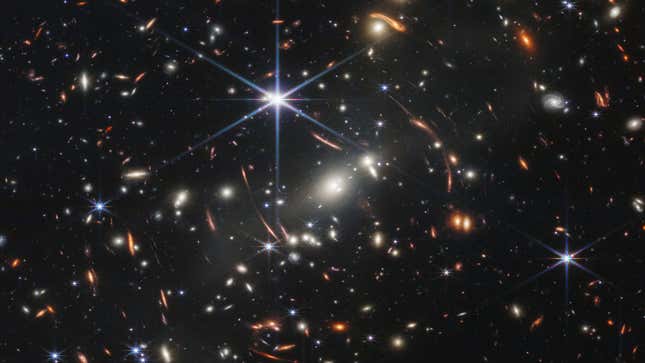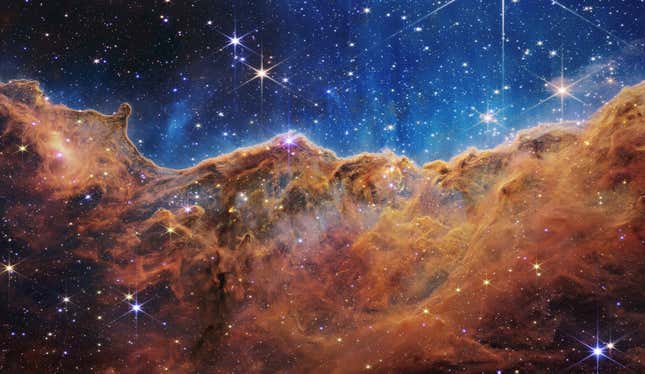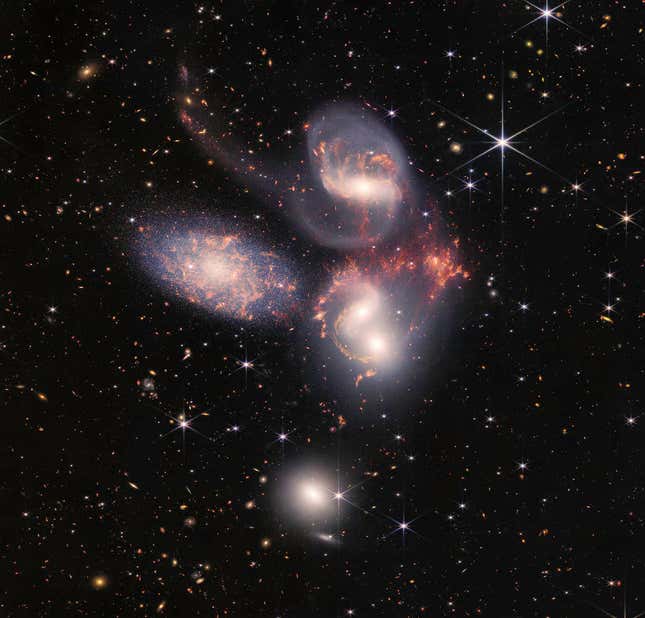Surely There Must Be Something Out There to Save Us
NASA's newest telescope unveiled thousands of never-before-seen galaxies. Hopefully one of them contains a lifeline for humans on Earth.
EntertainmentEntertainment

In the photo dump of all photo dumps, NASA has given us the most detailed look yet of places in the universe where someone or something—perhaps with the tolerance and empathy to help out a bunch of stupid, brawling humans—might live!
On Monday and Tuesday, NASA revealed the first images from its $10 billion James Webb Telescope, which was launched in December and is already doing laps around its predecessor, the Hubble Space Telescope. But what James Webb really revealed is a little bit more hope that we are not alone. Please, aliens, help.
-

-

-

-

-

-

-

-

-

-

-

-

-

-

-

-

-

-

-

-

-

-

-

-

-

-

-

-

-

-

-

-

-

-

-

-

-

-

-

-










































